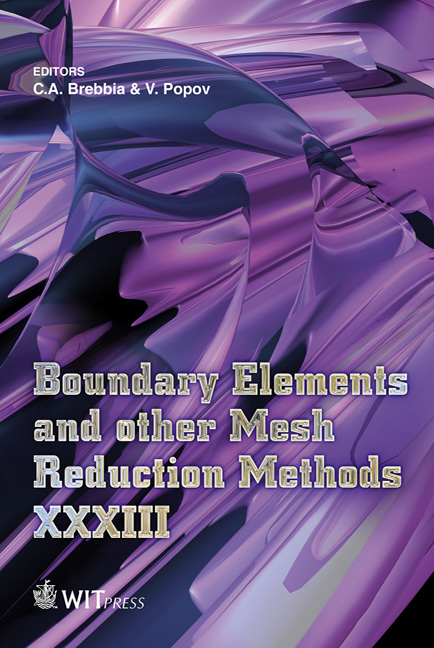An Efficient Boundary Element Modeling Of The Time Domain Integral Equations For Thin Wires Radiating In A Presence Of A Lossy Media
Price
Free (open access)
Transaction
Volume
52
Pages
10
Page Range
133 - 142
Published
2011
Size
399 kb
Paper DOI
10.2495/BE110121
Copyright
WIT Press
Author(s)
D. Poljak, S. Antonijevic & V. Doric
Abstract
The paper deals with the space-time Galerkin-Bubnov scheme of the Indirect Boundary Element Method for the solution of time domain integral equations for thin wires in the presence of lossy media of the Pocklington and Hallen type, respectively. The presence of a dissipative half-space is taken into account via the corresponding space-time reflection coefficients. Some illustrative computational examples related to the overhead wires and grounding electrodes are presented. Keywords: boundary elements, time domain modeling, Hallen equation, Pocklington equation, thin wires. 1 Introduction Generally, a direct time-domain analysis of thin wire configurations in the presence of lossy media can be carried out by using the appropriate space–time integral equations of either Pocklington or Hallen type [1–4]. One of the most efficient numerical solution approaches to both equation types is related to the Galerkin-Bubnov Indirect Boundary Element Method (GB-IBEM) [2]. When applied to the solution of the Hallen integral equation the method appears to be relatively complex comparing to various procedures for the solution of Pocklington equations, but, at the same time, it is proven to be highly efficient and accurate and unconditionally stable [2, 4]. On the other hand, the implementation of GB-IBEM to the solution of the Pocklington type equation is relatively simple, but suffers from numerical instabilities. The origin of these instabilities is the existence of space-time differential operator [2]. The GBIBEM solution of Pocklington equation in free space for certain values of time
Keywords
boundary elements, time domain modeling, Hallen equation, Pocklington equation, thin wires





